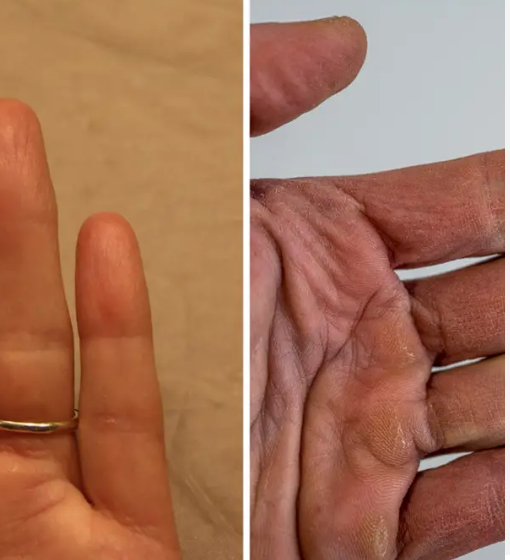What It Means If Your Fingers Turn White in the Cold – Causes, Symptoms, and When to Worry
Have you ever noticed that your fingers turn white or even blue when exposed to cold temperatures? While it might seem like just a normal reaction to the cold, this phenomenon could be a sign of an underlying condition. Understanding why this happens and when to seek medical attention is crucial for your health.
Why Do Fingers Turn White in the Cold?
The most common reason for fingers turning white in the cold is reduced blood flow. When exposed to cold temperatures, the body naturally directs blood away from the extremities (like fingers and toes) to keep vital organs warm. However, for some individuals, this response is exaggerated, leading to a condition called Raynaud’s phenomenon.
What Is Raynaud’s Phenomenon?
Raynaud’s phenomenon is a condition that affects blood circulation, causing fingers and toes to turn white, blue, or red in response to cold or stress. This happens because small blood vessels constrict more than usual, limiting the blood supply to the affected areas. Raynaud’s can be primary, meaning it occurs on its own, or secondary, meaning it is linked to other conditions such as autoimmune diseases.
Symptoms of Raynaud’s Phenomenon
- Fingers or toes turning white or blue in cold conditions
- Numbness or tingling sensations
- Pain or discomfort in affected areas
- Skin returning to a red color as blood flow resumes
Other Possible Causes of White Fingers
While Raynaud’s phenomenon is a common reason for this condition, other factors could also contribute:
- Frostbite – Prolonged exposure to extreme cold can lead to tissue damage.
- Poor circulation – Conditions like diabetes or cardiovascular issues can reduce blood flow.
- Nerve damage – Some neurological conditions can affect how blood vessels function.
- Medications – Certain drugs, such as beta-blockers, may cause circulation problems.
When to See a Doctor
If your fingers frequently turn white or blue, even in mild temperatures, or if you experience pain and numbness that affects daily activities, you should consult a doctor. In some cases, an underlying condition may require treatment to prevent complications.
How to Prevent and Manage White Fingers
- Wear warm gloves to protect your hands in cold weather.
- Keep stress levels low, as stress can trigger Raynaud’s attacks.
- Exercise regularly to improve blood circulation.
- Avoid smoking and caffeine, as they can constrict blood vessels.
- Use hand warmers or heated gloves if you are frequently in cold environments.
Final Thoughts
While fingers turning white in the cold can be a harmless reaction, it can also be a sign of Raynaud’s phenomenon or other circulation issues. Paying attention to your symptoms and taking steps to protect your hands can help you avoid discomfort and potential complications. If you suspect an underlying health condition, seeking medical advice is always a smart move.
By understanding your body’s signals, you can take control of your health and stay warm even in the coldest temperatures!

















